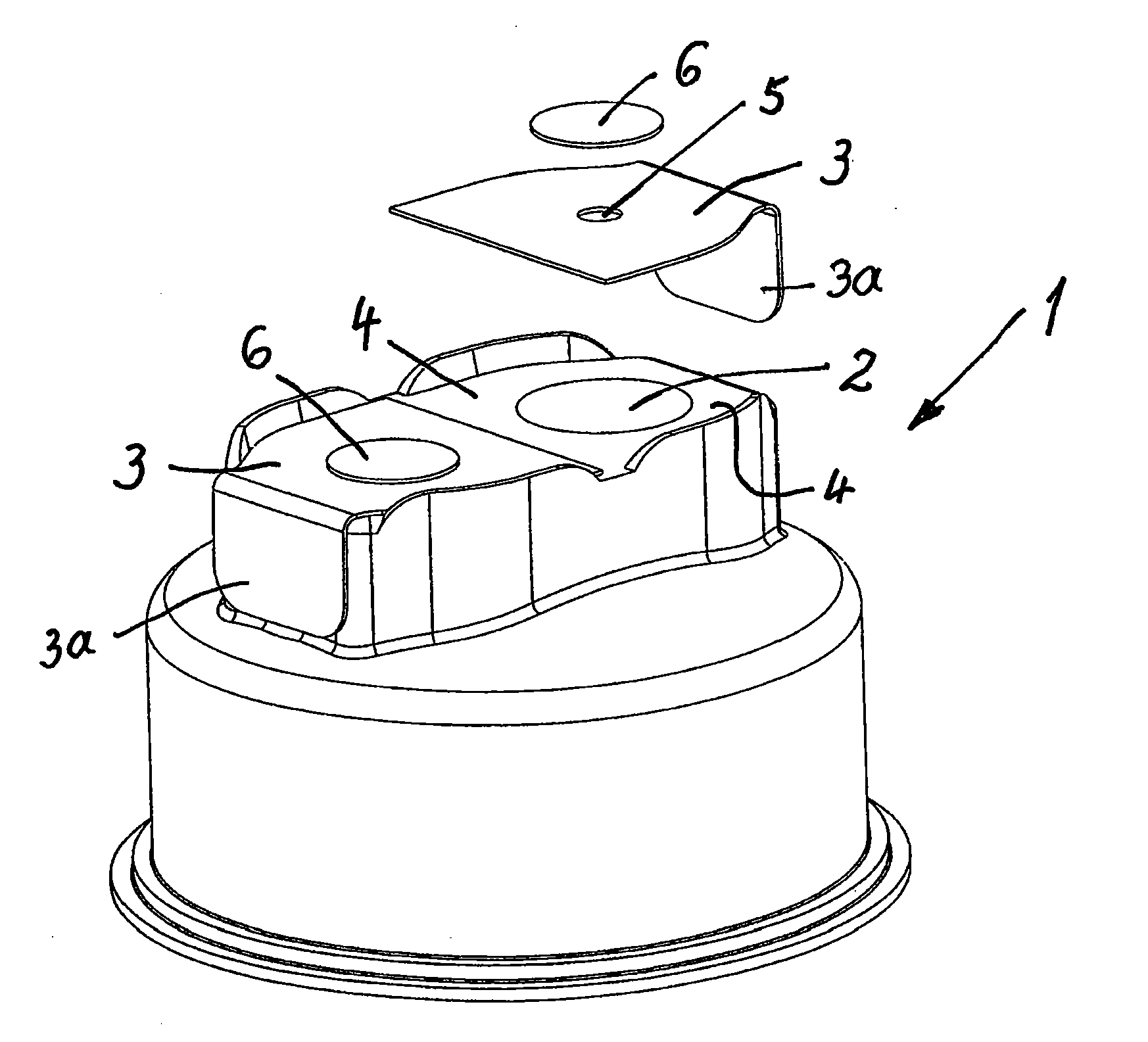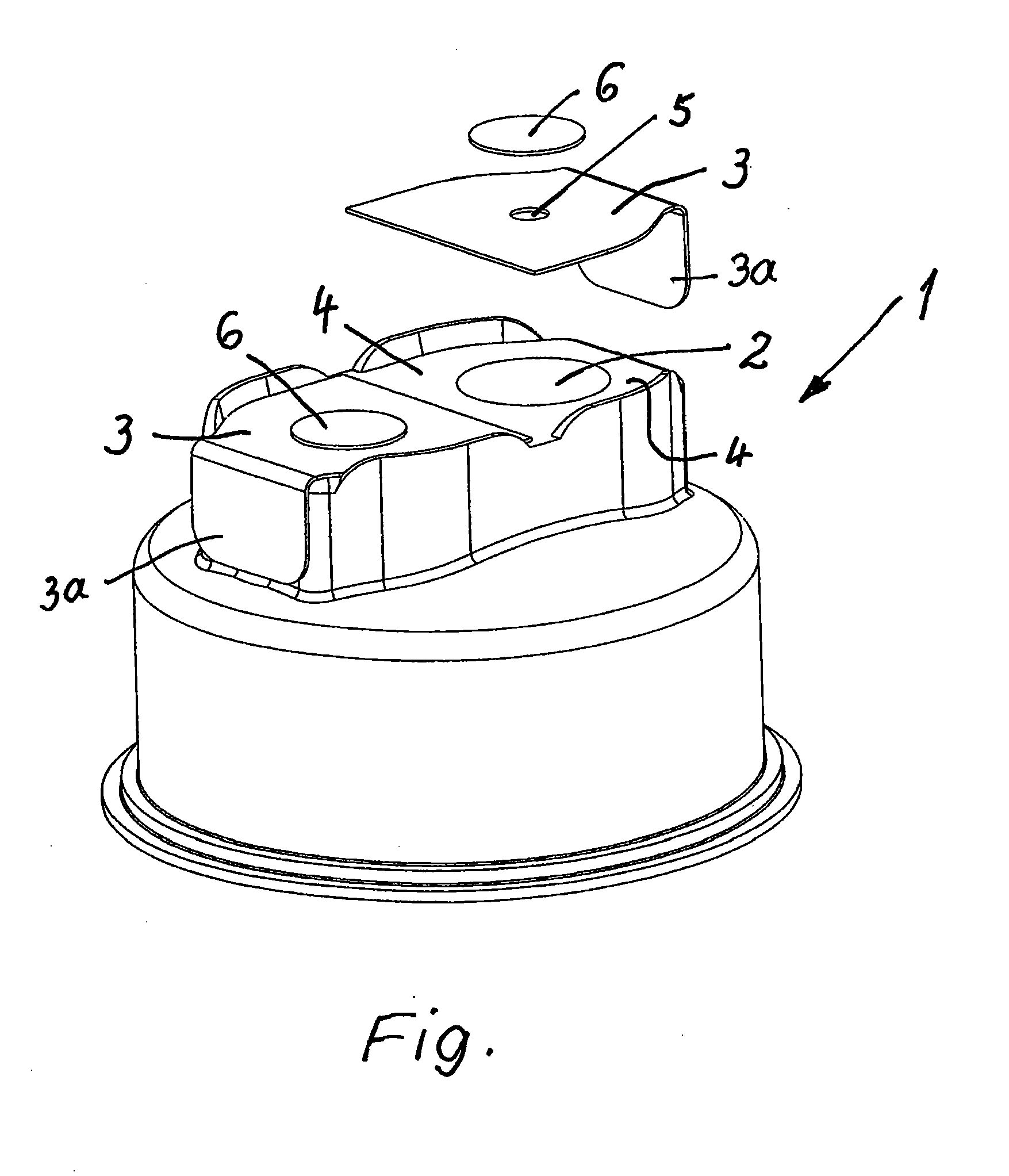Pierceable closure for medicine containers
- Summary
- Abstract
- Description
- Claims
- Application Information
AI Technical Summary
Benefits of technology
Problems solved by technology
Method used
Image
Examples
Embodiment Construction
[0019]Here, the sole FIGURE shows, in a perspective diagram, a cap-like, pierceable closure with a cover for the pierceable position, with this cover being able to be detached through peeling, wherein two pierceable positions are provided and the peelable cover reaching across both positions is to be seen in the position of use at one pierceable position and in an exploded-view representation at the other pierceable position.
[0020]A pierceable closure designated as a whole with 1 for medicine containers has approximately the shape of a cap and has two pierceable positions 2 on the top side facing away from the medicine container in the position of use. In the original position, these pierceable positions are covered by a detachable, sterile cover 3 that is formed as a metal or aluminum foil and that is connected, preferably sealed with the closure 1 around the pierceable positions 2 so that it can be ripped or peeled off. Here, this cover 3 covers both pierceable positions 2 and is ...
PUM
 Login to View More
Login to View More Abstract
Description
Claims
Application Information
 Login to View More
Login to View More - R&D
- Intellectual Property
- Life Sciences
- Materials
- Tech Scout
- Unparalleled Data Quality
- Higher Quality Content
- 60% Fewer Hallucinations
Browse by: Latest US Patents, China's latest patents, Technical Efficacy Thesaurus, Application Domain, Technology Topic, Popular Technical Reports.
© 2025 PatSnap. All rights reserved.Legal|Privacy policy|Modern Slavery Act Transparency Statement|Sitemap|About US| Contact US: help@patsnap.com


